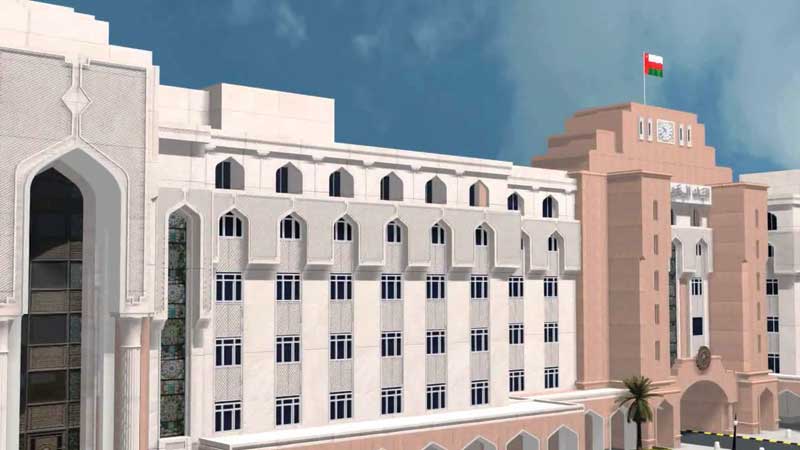

BUSINESS REPORTER
MUSCAT, Dec 7
A landmark strategy enshrined in the recently unveiled Medium Term Plan for Achieving Fiscal Balance will help deliver on the government’s goal to reduce public debt and narrow the unsustainable chasm between national revenues and expenditure trends, according to the Central Bank of Oman (CBO).
“The government is committed to achieving primary fiscal balance in the medium term while also strengthening its institutional and governance structures and enhancing its operational capacity to ensure effective planning and timely implementation of its fiscal policy over the medium term,” the apex bank stated in its 2019 Annual Report issued here on Monday.
The National Programme for Fiscal Balance (Tawazun), constituted in September 2019, is working out a medium-term fiscal consolidation plan, the report said.
“Tawazun works in concert with the Ministry of Finance to assess the challenges and opportunities the government faces over the medium term. Tawazun has been empowered by the Government through fast-tracked decision-making processes and reports directly to His Majesty; it has also been granted unrestricted access to any required data and information from any government entity as well as its full integration into the preparation and formulation of future state budgets,” it stated.
Despite efforts to push expenditure rationalisation during 2019, the fiscal position continued to reflect the evolving conditions in the economy. Notwithstanding a substantial decline, the fiscal deficit remained elevated due to lower oil prices and expenditure rationalisation constrained by socio-economic priorities and higher proportion share of committed expenditure (such as wages, pensions, interest payments, and so on).
In response to the challenges posed by the economic downturn and the pandemic, the government implemented urgent fiscal measures such as a cut in the budgeted expenditure by a minimum of 10 per cent across ministries/departments as well as a reduction in spending of state-owned enterprises (SOEs), according to the Central Bank.
The recovery in oil prices from the plunge, on the back of extension of Opec+ agreement on production cut coupled with a resumption of some economic activities globally, would also provide some fiscal support during 2020.
Nevertheless, the fiscal position remained under stress in 2019 despite continued expenditure rationalisation and some boost in non-hydrocarbon revenues. The hydrocarbon revenues (Oil & Gas) declined reflecting lower oil prices as well as crude production, while non-hydrocarbon revenues got a fillip mainly due to the improvement in the ‘income tax on companies and establishments’ at the same rate of 15 per cent of profits and ‘fees on licenses’ items, and so on, implemented in the last few years and the diversification of the economy gaining traction.
The budget deficit improved marginally during 2019 reflecting a spur in non-hydrocarbon revenues and cut in expenditure, despite hydrocarbon revenues witnessing a decline.
Notwithstanding non-hydrocarbon economic activities contracting marginally, non-hydrocarbon revenues increased reflecting improved compliance and measures undertaken to boost non-hydrocarbon revenues such as the introduction of excise tax. Along with improved tax compliance, the upcoming tax reforms, including implementation of Value Added Tax (VAT), would step up the tax buoyancy and decrease the reliance on hydrocarbon revenues, it noted.
According to the CBO, the government’s continued focus on diversification away from the hydrocarbon sector will also bolster the contribution of the nonhydrocarbon sector to government revenues.
The government revenues outperformed the budget estimates by 4.8 per cent and as a percentage of GDP increased marginally to 36.2 per cent in 2019. The non-hydrocarbon revenues as a percentage of non-hydrocarbon GDP inched up to 12.7 per cent in 2019 from 11.5 per cent in 2018. The contribution of non-hydrocarbon revenues in total government revenues increased from 40.3 per cent in 2018 to 42.4 per cent in 2019.
Although the share of hydrocarbon revenues in total government revenues declined in 2019, the completion of the second phase of the Khazzan project by 2021 would further boost hydrocarbon revenues, it said.
Total government expenditure declined on account of both current and capital spending, although participation and other expenses increased considerably.
turn to page 14
Oman Observer is now on the WhatsApp channel. Click here



